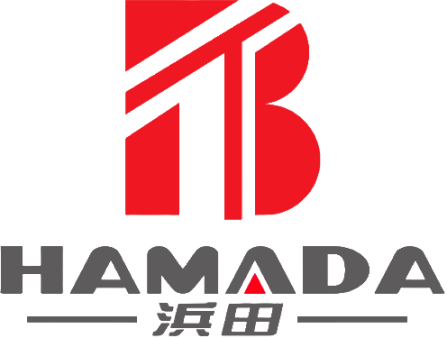What Does a Harmonic Drive Do? Exploring the Role of this Innovative Technology
What Does a Harmonic Drive Do
Harmonic Drive
In the world of robotics, aerospace, and beyond, one technology stands out for its precision and efficiency: the Harmonic Drive. But what exactly does a Harmonic Drive do, and why is it garnering attention across industries? Let's delve into the fascinating world of this innovative technology to uncover its functions and applications.
Understanding the Harmonic Drive
At its core, a Harmonic Drive is a type of gear system known for its compact size, high precision, and low backlash. It consists of three main components: a circular spline, a flex spline, and a wave generator. The unique design of the Harmonic Drive allows for high gear reduction ratios in a relatively small package, making it ideal for applications where space is limited and precise motion control is essential.
Key Functions of a Harmonic Drive
1. High Precision Motion Control: One of the primary functions of a Harmonic Drive is to provide precise motion control in various mechanical systems. Its design allows for extremely accurate positioning and repeatability, making it invaluable in robotics, automation, and manufacturing processes where precise movements are required.
2. Backlash Reduction: Backlash, or the clearance between gear teeth, can result in inaccuracies and inefficiencies in gear systems. The Harmonic Drive minimizes backlash, ensuring smooth and precise motion transmission even in high-precision applications.
3. Compact Design: Unlike traditional gear systems, which often require multiple stages of gearing to achieve high reduction ratios, the Harmonic Drive achieves significant gear reduction in a single stage. This compact design saves space and weight, making it ideal for applications where size and weight constraints are critical, such as in aerospace and medical devices.
4. Torque Amplification: Another function of the Harmonic Drive is torque amplification. By using a flexible spline and wave generator to deform the circular spline, the drive can achieve high torque output relative to its size. This feature is particularly useful in applications where high torque is required, such as in robotic arms and precision machinery.
Applications Across Industries
1. Robotics: Harmonic Drives are widely used in robotics for their precise motion control capabilities. They are commonly found in robotic joints, manipulators, and end-effectors, where accuracy and reliability are essential for tasks ranging from assembly to surgery.
2. Aerospace: In the aerospace industry, where weight and space constraints are critical, Harmonic Drives play a vital role in various applications, including satellite mechanisms, gimbal systems, and actuation systems for aircraft control surfaces.
3. Medical Devices: The compact size and high precision of Harmonic Drives make them well-suited for medical devices such as surgical robots, imaging equipment, and prosthetic limbs, where precise motion control is crucial for patient safety and treatment outcomes.
4. Automation: In manufacturing and industrial automation, Harmonic Drives are used in robotic arms, CNC machines, and other automated systems to achieve precise motion control and improve productivity.
Future Trends and Developments
As technology continues to advance, so too will the capabilities of Harmonic Drives. Ongoing research and development efforts are focused on improving efficiency, reducing size and weight, and expanding the range of applications. Additionally, advancements in materials and manufacturing techniques are expected to further enhance the performance and reliability of Harmonic Drives, making them even more indispensable in a wide range of industries.
In conclusion, the Harmonic Drive plays a vital role in enabling precise motion control and efficient power transmission in a variety of applications. Its compact size, high precision, and low backlash make it an invaluable technology across industries, from robotics and aerospace to medical devices and automation. As technology continues to evolve, the Harmonic Drive will continue to push the boundaries of what is possible in terms of motion control and mechanical efficiency.
 English
English Español
Español Português
Português русский
русский français
français 日本語
日本語 Deutsch
Deutsch Tiếng Việt
Tiếng Việt Italiano
Italiano Nederlands
Nederlands ไทย
ไทย Polski
Polski 한국어
한국어 Svenska
Svenska magyar
magyar Malay
Malay বাংলা
বাংলা Dansk
Dansk Suomi
Suomi हिन्दी
हिन्दी Pilipino
Pilipino Türk
Türk Gaeilge
Gaeilge عربى
عربى Indonesia
Indonesia norsk
norsk اردو
اردو čeština
čeština Ελληνικά
Ελληνικά Українська
Українська Javanese
Javanese فارسی
فارسی தமிழ்
தமிழ் తెలుగు
తెలుగు नेपाली
नेपाली Burmese
Burmese български
български ລາວ
ລາວ Latine
Latine Қазақ
Қазақ Euskal
Euskal Azərbaycan
Azərbaycan slovenský
slovenský Македонски
Македонски Lietuvos
Lietuvos Eesti Keel
Eesti Keel Română
Română Slovenski
Slovenski मराठी
मराठी Српски
Српски
Innovative Applications of HarmonicDrive Actuators in Semiconductor Equipment
As semiconductor process technology evolves towards sub-5nm, equipment places higher demands on the accuracy, reliability, and space utilization of motion control systems. HarmonicDrive, with its integrated harmonic reduction technology and servo motor design, has become a core drive solution for key processes such as CMP (Chemical Mechanical Polishing), wafer transport, and photolithography equipment.
Read MoreDomestic Substitution Case Study: Technological Breakthroughs and Cost Advantages
Harmonic Drive Reducer modules, newly developed by Harmonic Drive, are specifically designed for humanoid robot finger joints. With a compact diameter of just 28mm, they achieve 0.1° repeatability while withstanding 15Nm of peak torque. Their patented flexible wheel material and optimized tooth profile ensure a lifespan exceeding 20,000 hours, meeting the high-frequency grasping demands of robots.
Read MoreCustomer Delegation Visits Company
Recently, a delegation of important clients was invited to visit DOBOT's headquarters and smart manufacturing exhibition hall. The delegation gained an in-depth understanding of the company's latest achievements in smart manufacturing, collaborative robots, educational robots, and automation solutions, and expressed high recognition of DOBOT's global market presence and innovative strength.
Read More